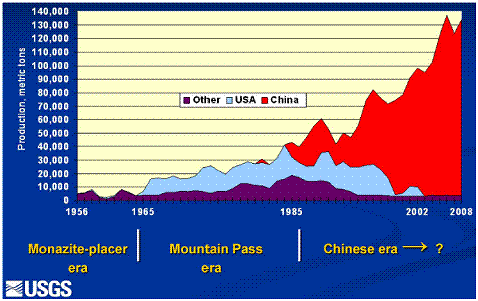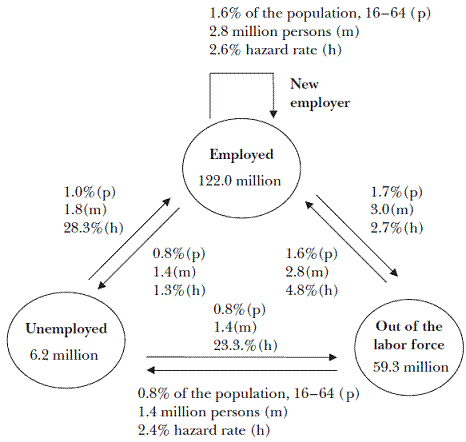A vision of what American economic growth over the next decade could look like might also help us address our immediate economic problems.
Macroeconomists have often used Japan in the 1990s as an example of bad monetary policy. It is abundantly clear that their outcome would have been better if the real estate bubble had been arrested earlier. And even taking the problems of the aftermath of that as given, a more expansionary monetary policy after the collapse could have still helped. But Japan also was burdened by longer run structural problems– other countries were taking over the manufacturing markets in which Japan had historically excelled. It’s easy to focus too much on monetary issues and too little on the more fundamental structural challenges in trying to draw the right lesson from Japan’s experience.
Columbia University Professor Jeffrey Sachs worries that the United States today may also be paying too little attention to those long-run challenges:
Obama’s economic strategy assumes that the U.S. economy has a strong natural tendency in the medium term (say three to five years) to bounce back from the 2008 recession with renewed growth. The interpretation is that demand for new homes has temporarily declined as a result of the bursting of the housing bubble and the bankruptcy of Lehman Brothers, but that private demand will quickly recover, especially if jolted by a temporary stimulus. Yet the problem in the US is deeper. The collapse of housing is actually a symptom rather than the fundamental source of US economic weakness.
The structural problem is that America has lost its international competitiveness in basic industries including textiles, apparel, and several other areas of manufacturing. The production jobs are now in China, India, and elsewhere, where wages are much lower while productivity is more or less comparable to the US (and where production often involves US companies, using US technologies, producing overseas and re-exporting to the US market). Only US college grads can resist the international competitive pressures; high-school grads have found the labor market fall out from beneath their feet.
The housing boom between 1998 and 2008 was an indirect reaction to the loss of manufacturing. As the US shed manufacturing jobs in the 1980s and 1990s, the Federal Government and Federal Reserve tried to compensate by boosting jobs in construction and other sectors shielded from international competition (so-called non-traded sectors). The Fed cut interest rates and the White House and Congress promoted housing finance, including through reckless deregulation and irresponsible behavior by government-backed entities like Fannie Mae. These efforts produced a temporary boom in housing, followed by the bust in 2008.
If U.S. growth were to resume with the current account in balance, what would it look like? Although many people share Sach’s focus on manufacturing, I would call attention to this conclusion from a 1990 study by Stanford Professor Gavin Wright:
The United States became the world’s preeminent manufacturing nation at the turn of the twentieth century. This study considers the bases for this success by examining the factor content of trade in manufactured goods. Surprisingly, the most distinctive characteristic of U.S. manufacturing exports was intensity in nonreproducible natural resources; furthermore, this relative intensity was increasing between 1880 and 1920. The study then asks whether resource abundance reflected geological endowment or greater exploitation of geological potential. It was mainly the latter.
For over a century, the U.S. produced more oil than any other country, and even today we are still the third biggest oil producer in the world. The U.S. today is the world’s leading producer of items such as lumber, corn and poultry, number 2 in coal, oranges, soybeans, and gypsum, and third in cotton and lead. Our abundant natural resources have always been an important advantage for America, and are still an important advantage today.
And it is within our power to do more with our natural resources. A decade ago, the U.S. was the second biggest producer of rare earth elements, which play a critical role in many of today’s high-tech devices and systems. But U.S. production stopped in 2002, as a result of environmental regulations and competition from cheap Chinese imports. With prices back up, U.S. production may resume.

Global rare-earth oxide production. Source: Tse (2011).
Is taking maximal advantage of our natural resources a top priority for U.S. policy? Recent decisions by the U.S. Fish and Wildlife Service would pose significant impediments to California agriculture [1], [2] and Texas oil production [3]. Luminant, a Texas utility, claims it will have to close lignite mines and power generating facilities to comply with the Environmental Protection Agency’s Cross-State Air Pollution Rule, causing the loss of 500 jobs. [4]. National Cement Company claims it has suspended a $350 million project to build a new cement kiln in Alabama, whose construction would have employed 1500 workers, because the company says it cannot figure out which of three proposed air quality standards it is supposed to meet. [5]. Each of the over a dozen offshore drilling rigs that have been idled or relocated overseas as a result of the Department of Interior’s drawn-out approval process may have caused a thousand workers to lose their jobs. [7].
Peter Dorman argues that regulation cannot matter much for the current U.S. employment situation:
If you increase the cost of making something, you need more people to make the same amount, or you need people to make something else instead, something you wouldn’t have wanted to make without the regulation. That’s why economists who study regulations measure their impacts on productivity and output, not jobs….
As those following current economic debate know, our unemployment is almost entirely due to insufficient demand; structural factors have nothing to do with it. (We don’t see wages shooting up in sectors starved for the right kind of labor.) In theory, environmental regulation could cause short-term industry shifts that would exacerbate structural unemployment– if we had any.
I see the labor market as much more dynamic than this kind of discussion supposes. In a typical month of normal economic growth, 7.2 million workers in the U.S. might quit or lose their jobs, and a somewhat different group of 7.4 million workers obtain new or different jobs. All this churning produces the net gain of 160,000 or so new jobs we’d usually see reported. A key thing that happens during a recession is that there are fewer of those new positions available, so that when people lose their jobs, a greater number than usual remain unemployed, and the economy simply loses whatever those people had been contributing instead of replacing it with something better. From that perspective, if new regulations cause someone to lose their job or kill a new project that would have been hiring, the regulations are making a direct contribution to our cyclical problems, and are significantly more costly than if the same regulations had been implemented when the economy was operating at full employment.

Average Monthly Worker Flows over 1996 to 2003, as inferred from the Current Population Survey. Source: Davis, Faberman and Haltiwanger (2006).
Of course this is not to argue that no new regulations should ever be imposed in times of recession. Ed Dolan explains clearly why by proposing a facetious example:
For unemployed urban youths, a Licensed Shoplifter Corps. LSC members would have immunity from prosecution for theft. They could appropriate cell phones, Levis, and canned goods from local stores and sell them at discounted prices in special neighborhood shops. Jobs would be created both for LSC members and for workers who resold the stolen goods.
Obviously what we need to do is weigh the costs of regulation against the benefits. Just because the costs are higher in a recession, that does not mean that new regulations during a recession are always a bad idea. But I do believe Americans need to acknowledge that, both because of the current economic weakness, and because of the longer-run challenge in finding a basis for future economic growth and current-account balance, we are poorer than we used to be. A challenge of this magnitude needs to be approached with some humility about just what we should be willing to do to get back on track.
And doing things the way we used to offers one sensible guideline for how that might be done.
What could America be good at?
- Bulenox: Get 45% to 91% OFF ... Use Discount Code: UNO
- Risk Our Money Not Yours | Get 50% to 90% OFF ... Use Discount Code: MMBVBKSM
Disclaimer: This page contains affiliate links. If you choose to make a purchase after clicking a link, we may receive a commission at no additional cost to you. Thank you for your support!


usa good at social security, ebt, medicaid, medicare, disabilty payments(for fake disabilties)unemployment insurance, sec 8 vouchers tax payer paid job training (for non existent jobs), sad to say those are thing this country is very good at